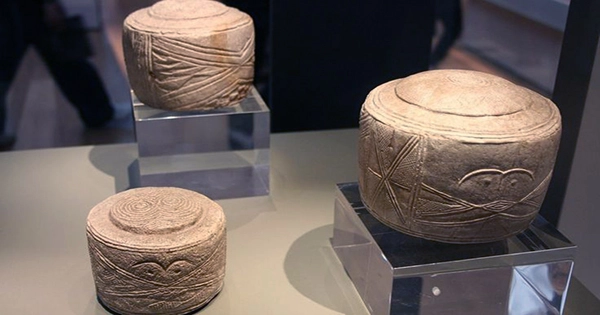According to the British Museum, a 5,000-year-old chalk drum sculpture is one of the most significant artistic discoveries of the last century in the UK. In a news statement, Neil Wilkin, the curator of a new exhibit highlighting the discovery, said, “This is a very spectacular discovery, and it is the most important piece of prehistoric art to be uncovered in Britain in the previous 100 years.”
The drum sculpture, which was unearthed in 2015, will be presented for the first time at the British Museum this week. Despite the fact that the drum was discovered 380 kilometers (240 miles) away from Stonehenge in Burton Agnes, East Yorkshire, it will be included in the “The World of Stonehenge” display because it is from the same date and has a similar style to artefacts found at the site.
The drum, which is thought to have been used as a piece of art or a talisman rather than as a musical instrument, was discovered near the bones of three children. According to the Washington Post, the children were between the ages of three and twelve and were “cuddling.” Two had their hands interlaced and were facing each other, while the third had their arms around the couple. Given that graves were not frequent in Neolithic Britain, this find is highly noteworthy. More than likely, bodies were incinerated or left out for wildlife to eat.
The burial was between 3005 and 2890 BCE, according to radiocarbon dating of a bone from one of the children. This is the first time archaeologists have been able to date an object with certainty — three more drums, nearly identical to this one, were discovered 24 kilometers (15 miles) apart in Folkton. This new evidence reveals that all four drums were created during the initial phase of Stonehenge’s construction, 500 years later than previously supposed.
The Burton Agnes drum’s design is reminiscent of Stonehenge and other Neolithic structures in Britain and Ireland. “The Burton Agnes drum, in my opinion, is even more beautifully carved and demonstrates linkages between people in Yorkshire, Stonehenge, Orkney, and Ireland,” Wilkin continued.
The British Museum describes it as “one of the most intricately decorated items of this time found anywhere in Britain and Ireland.” “This drum is really remarkable,” Jennifer Wexler, the exhibition’s project curator, told CNN, “because it actually encompasses a sort of aesthetic language that we see throughout the British Isles at this time, and we’re talking 5,000 years ago.”
A chalk ball and a bone pin were also discovered at the burial site, in addition to the drum. The ball could be a fertility symbol or a child’s toy, according to the British Museum. From February 17, the Burton Agnes drum, together with the Folkton drums, will be on display at the British Museum.















